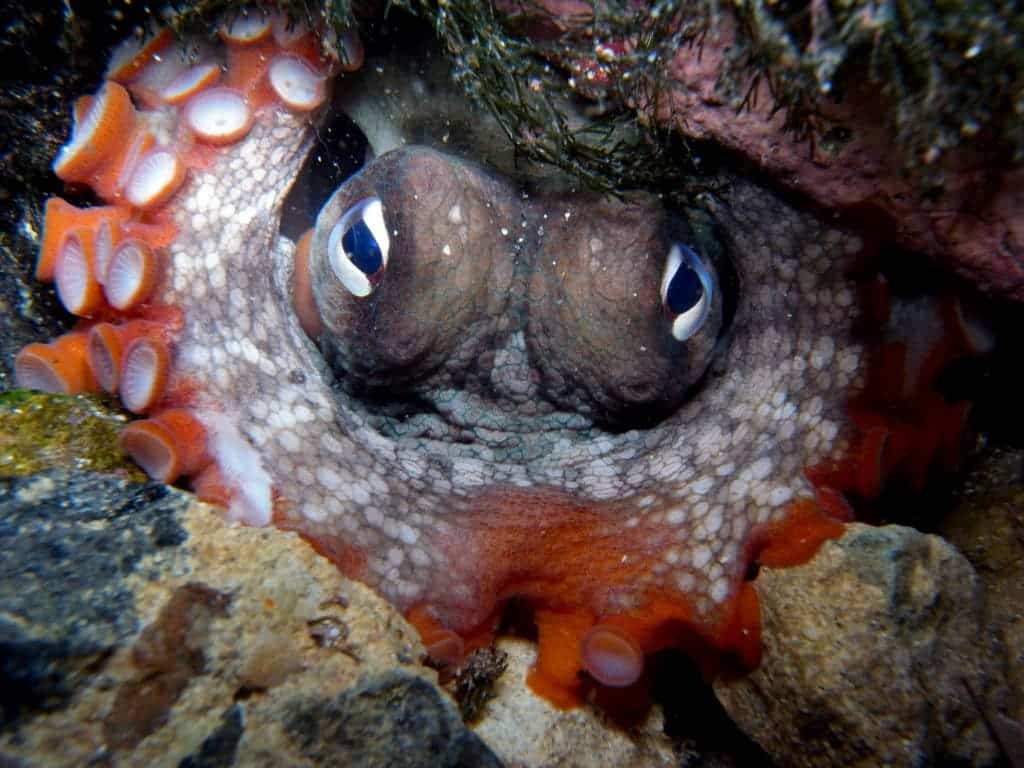Researchers were thrilled to discover the aquatic architecture, which is reminiscent of human cities. But in a city filled with cannibal cephalopods, life is not a walk in the park.

The octopus has long been regarded as an intelligent yet solitary creature. Gloomy octopuses (octopus tetricus) especially, were thought to enjoy isolation. But a new finding throws all that away, as researchers discovered what can only be regarded as an octopus settlement.
With underwater GoPro cameras, they gathered 10 hours of video footage of the site, which lies in Jervis Bay just off the coastline of eastern Australia. The city measures 18 by 4 meters (59 by 13 feet) and lies 10 to 15 meters (33 to 49 feet) under the water. It comprises of 16 individuals who have constructed dens from sand and shells. Much like advanced vertebrates, they exhibit complex social behaviors. They congregate with each other, they communicate, they dwell, and sometimes they even evict each other from their respective dens. Previously, researchers believed the only social behavior exhibited by the species was mating, but this is now obviously not the case.
“At both sites there were features that we think may have made the congregation possible — namely several seafloor rock outcroppings dotting an otherwise flat and featureless area,” said Stephanie Chancellor, a Ph.D. student in biological sciences at the University of Illinois at Chicago and an author on the paper.
“In addition to the rock outcroppings, octopuses who had been inhabiting the area had built up piles of shells left over from creatures they ate, most notably clams and scallops. These shell piles, or middens, were further sculpted to create dens, making these octopuses true environmental engineers.”

The second site she refers to is another octopus city, Octopolis, which was discovered back in 2009. However, when researchers found it, they thought it to be a freak occurrence. The theory was that Octopolis was created only due to an unidentifiable human object which formed a central point that the cephalopods surrounded with dens. But in this new site, there’s no such object. Without any external influence, the cephalopods built the city themselves. This was very surprising and leaves researchers wondering how common this behavior is. It’s also unclear how this fits in their greater behavioral pattern.
But this is not an octopus utopia. Although the animals lived very close to each other, they weren’t always friendly neighbors. Mating, signs of aggression, chasing, and other signaling behaviors were observed. This confrontational behavior not only expends a lot of energy but also poses a great injury risk. Whatever the benefits are, they are great enough to outweigh the downsides — which are significant.
“Animals were often pretty close to each other, often within arm’s reach,” Chancellor said.
“Some of the octopuses were seen evicting other animals from their dens. There were some apparent threat displays where an animal would stretch itself out lengthwise in an ‘upright’ posture and its mantle would darken. Often another animal observing this behavior would quickly swim away,” she said.

Octopus tetricus adults typically have an arm span of 2 meters (6.6 ft). Their eyes are usually white, and the skin consists of many small pavement-like patches and large papillae which can be raised over the body to produce a spiked appearance, common when imitating seaweed. They can also change body color, which makes them even more efficient at this imitation. They feed at night, using their sharp beak to feed on crabs and mollusks.
Journal Reference: David Scheel, Stephanie Chancellor, Martin Hing, Matthew Lawrence, Stefan Linquist & Peter Godfrey-Smith. A second site occupied by Octopus tetricus at high densities, with notes on their ecology and behavior. http://dx.doi.org/10.1080/10236244.2017.1369851



